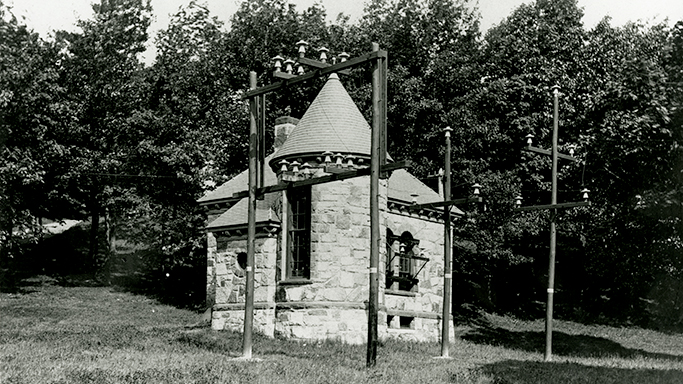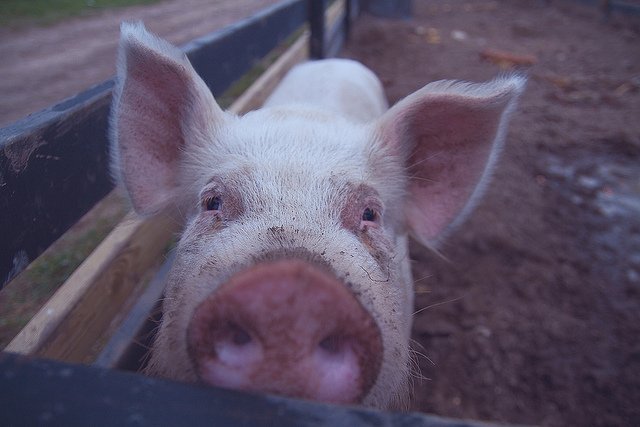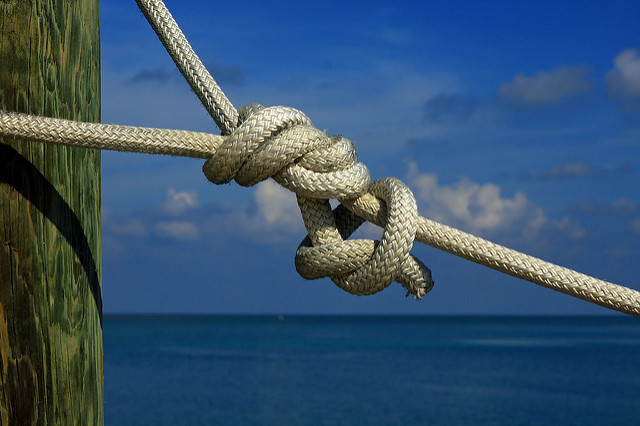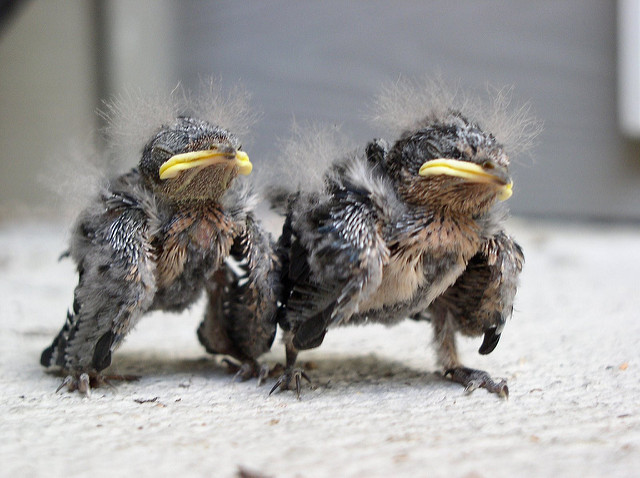Archive for the ‘Uncertainty’ Category
Situational Awareness (Winter is Coming)
 Business and life are all about choosing how you want to allocate your time and money. In life, it’s your personal time and money and in business it’s the company’s.
Business and life are all about choosing how you want to allocate your time and money. In life, it’s your personal time and money and in business it’s the company’s.
If you’ve ever done any winter hiking, you know that it’s important to know the terrain. If there’s a mountain in the way, you either go over it or around it. But there is one thing you can’t do is pretend it’s not there. If you go around it, you’ve got to make sure you have enough energy, food, water and daylight to make the long trek to shelter. If you go over it, you’ve got to make sure you have the ice picks, crampons, down jackets and climbing skills to make it up and down to shelter. With winter hiking, the territory, gear and team capability matter. And the right decision is defined by situational awareness.
And what of the shelter? Does it sleep five, six or seven? And because you have seven on your team, it’s not really shelter if it sleeps five. And if you don’t know how many it sleeps, you’re not situationally aware. And if you’re not situationally aware, on five may fit in the shelter and two will freeze to death. Maybe before your trip you should look at the map and learn all the shelters their locations and how many the can hold. The right action and the safety of your crew depends on your situational awareness.
And the decision depends on how much daylight do you have left. Before you left basecamp it was possible to know when the sun will set. Did you take the time to look at the charts? Did you take advantage of the knowledge? If you don’t have enough sunlight, you’ve got to go over the top. If you do, you can take the leisurely great circle route around the mountain. And if you don’t know, you’ve got to roll the dice. I’d prefer to be aware of the situation and keep the dice in my pocket. And for that, you need to be aware of the situation.
Winter hiking is difficult enough even when you have maps of the terrain, weather forecasts, locations of the shelters and knowledge of when the sun will set. But it’s an unsafe activity when there are no maps of the territory, the weather is unknown and there’s no knowledge of the shelters. But that’s just how it is with innovation – the territory has never been hiked, no maps, no weather forecast, and shelters are unknown. With innovation, there’s no situational awareness unless you create it. And that’s why with innovation, the first step is to create the maps. No maps, no possibility of situational awareness.
The best people at situational awareness are the military. The know maps and they know how to use them. The know to do recon to position the enemy on the map and they know to use the situational awareness (the map, the enemy’s location, and their direction of travel) to decide how what to do. If the enemy’s force is small and in poorly defensible position, there are a certain set of actions that are viable. If the enemy force is large and has the high ground, it’s time to sit tight or retreat with dignity. (To be clear, I’m a pacifist and this military example does mean I condone violence of any kind. It’s just that the military is super good at situational awareness.)
If you’re not making maps of the competitive landscape, you’re doing it wrong. If you’re not moving resources around and speculating how the competition will respond based on the topography and your position within it, you’re not sharpening your situational awareness and you’re not taking full advantage of the information around you. If you don’t know where the mountains are you can’t avoid them or use them to slow your competition. And if you don’t know know where the shelters are an how many miles you can hike in a day, you don’t know if you’re overextending your position and putting your crew at risk.
Winter is coming. If you’re not creating maps to build situational awareness, what are you doing?
Image credit – Martin Fisch
How to Avoid a Cliff
 Much like living organisms continually evolve to secure their place in the future, technological systems can be thought to display similar evolutionary behavior. Viruses mutate so some of them can defeat the countermeasures of their host and live to fight another day. Technological systems, as an expression of a company’s desire to survive, evolve to defeat the competition and live to pay another dividend.
Much like living organisms continually evolve to secure their place in the future, technological systems can be thought to display similar evolutionary behavior. Viruses mutate so some of them can defeat the countermeasures of their host and live to fight another day. Technological systems, as an expression of a company’s desire to survive, evolve to defeat the competition and live to pay another dividend.
There are natural limits to evolutionary success in any single direction. When one trait is improved it pushes on the natural limits imposed by the environment. For example, a bacterium let loose in a friendly Petri dish will replicate until it eats all the food in the dish. Or, on a longer timescale, if the mass of a bird increases over generations when its food source is plentiful, the bird will get larger but will also get less agile. The predators who couldn’t catch the fast, little bird of old can easily catch and eat the sluggish heavyweight. In that way, there’s an edge condition created by the environmental Petri dishes and predators. And it’s the same with technological systems.
Companies and their technological systems evolve within their competitive environment by scanning the fitness landscape and deciding where to try to improve. The idea is to see preferential lines of improvement and create new technologies to take advantage of them. Like their smaller biological counterparts, companies are minimum energy creatures and want to maximize reward (profit) with minimum effort (expense) and will continue to leverage successful lines of evolution until it senses diminishing returns.
The diminishing returns are a warning sign that the company is approaching an edge condition (a Petri dish of a finite size). In landscape lingo, there’s a cliff on the horizon. In technology lingo, the rate of improvement of the technology is slowing. In either language, the edge is near and it’s time to evolve in a new direction because this current one is out of gas.
Like the bird whose mass increases over the generations when food is readily available, companies also get fat and slow when they successfully evolve in a single direction for too long. And like the bird, they get eaten by a more agile competitor/predator. And just as the replication rate of the bacterium accelerates as the food in the Petri dish approaches zero, a company that doesn’t react to a slowing rate of technological improvement is sure to outlive its business model.
Biology and technology are similar in that they try new things (create variants of themselves) in order to live another day. But there’s a big difference – where biology is blind (it doesn’t know what will work and what won’t), technology is sighted (people that create use their understanding to choose the variants they think will work best). And another difference is that biological evolution can build only on viable variants where technology can use mental models as scaffolds to skip non-viable embodiments to cross a chasm.
There’s no need to fall off the cliff. As a leading indicator, monitor the rate of improvement of your technology. If its rate of improvement is still accelerating, it’s time to develop the next line of evolution. If its rate is declining, you waited too long. It’s time to double down on two new lines of evolution because you’re behind the curve. And remember, like with the population of bacteria in the Petri dish, sales will keep growing right up until the business model runs out of food or a competitor eats you.
Image credit — Amanda
With novelty, less can be more.
 When it’s time to create something new, most people try to imagine the future and then put a plan together to make it happen. There’s lots of talk about the idealize future state, cries for a clean slate design or an edict for a greenfield solution. Truth is, that’s a recipe for disaster. Truth is, there is no such thing as a clean slate or green field. And because there are an infinite number of future states, it’s highly improbable your idealized future state is the one the universe will choose to make real.
When it’s time to create something new, most people try to imagine the future and then put a plan together to make it happen. There’s lots of talk about the idealize future state, cries for a clean slate design or an edict for a greenfield solution. Truth is, that’s a recipe for disaster. Truth is, there is no such thing as a clean slate or green field. And because there are an infinite number of future states, it’s highly improbable your idealized future state is the one the universe will choose to make real.
To create something new, don’t look to the future. Instead, sit in the present and understand the system as it is. Define the major elements and what they do. Define connections among the elements. Create a functional diagram using blocks for the major elements, using a noun to name each block, and use arrows to define the interactions between the elements, using a verb to label each arrow. This sounds like a complete waste of time because it’s assumed that everyone knows how the current state system behaves. The system has been the backbone of our success, of course everyone knows the inputs, the outputs, who does what and why they do it.
I have created countless functional models of as-is systems and never has everyone agreed on how it works. More strongly, most of the time the group of experts can’t even create a complete model of the as-is system without doing some digging. And even after three iterations of the model, some think it’s complete, some think it’s incomplete and others think it’s wrong. And, sometimes, the team must run experiments to determine how things work. How can you imagine an idealized future state when you don’t understand the system as it is? The short answer – you can’t.
And once there’s a common understanding of the system as it is, if there’s a call for a clean sheet design, run away. A call for a clean sheet design is sure fire sign that company leadership doesn’t know what they’re doing. When creating something new it’s best to inject the minimum level of novelty and reuse the rest (of the system as it is). If you can get away with 1% novelty and 99% reuse, do it. Novelty, by definition, hasn’t been done before. And things that have never been done before don’t happen quickly, if they happen at all. There’s no extra credit for maximizing novelty. Think of novelty like ghost pepper sauce – a little goes a long way. If you want to know how to handle novelty, imagine a clean sheet design and do the opposite.
Greenfield designs should be avoided like the plague. The existing system has coevolved with its end users so that the system satisfies the right needs, the users know how to use the system and they know what to expect from it. In a hand-in-glove way, the as-is system is comfortable for end users because it fits them. And that’s a big deal. Any deviation from baseline design (novelty) will create discomfort and stress for end users, even if that novelty is responsible for the enhancement you’re trying to deliver. Novelty violates customer expectations and violating customer expectations is a dangerous game. Again, when you think novelty, think ghost peppers. If you want to know how to handle novelty, imagine a green field and do the opposite.
This approach is not incrementalism. Where you need novelty, inject it. And where you don’t need it, reuse. Design the system to maximize new value but do it with minimum novelty. Or, better still, offer less with far less. Think 90% of the value with 10% of the cost.
Image credit – Laurie Rantala
A Healthy Dose of Heresy
 Anything worth its salt will meet with resistance. More strongly, if you get no resistance, don’t bother.
Anything worth its salt will meet with resistance. More strongly, if you get no resistance, don’t bother.
There’s huge momentum around doing what worked last time. Same as last time but better; build on success; leverage last year’s investment; we know how to do it. Why are these arguments so appealing? Two words: comfort and perceived risk. Why these arguments shouldn’t be so appealing: complacency and opportunity cost.
We think statically and selectively. We look in the rear view mirror, write down what happened and say “let’s do that again.” Hey, why not? We made the initial investment and did the leg work. We created the script. Let’s get some mileage out of it. And we selectively remember the positive elements and actively forget the uncertainty of the moment. We had no idea it was going to work, and we forget that part. It worked better than we imagined and we remember the “working better” part. And we forget we imagined it would go differently. And we forget that was a long time ago and we don’t take the time to realize things are different now. The rules are dynamic, yet our thinking is static.
We compete with the past tense. We did this and they did that, and, therefore, that’s what will happen again. So wrong. We’ve got smarter; they’ve got smarter; battery capacity has tripled; power electronics are twice as efficient; efficiency of solar panels has doubled; CRISPR can edit our genes. The rules are different but the sheet music hasn’t changed. The established players sing the same songs and the upstarts cut them off at the knees.
If you were successful last time and everyone thinks your proposed project is a good idea, ball it up and throw it in the trash. It reeks of stale thinking. If your project plan is dismissed by the experts because it contradicts the tired recipe of success, congratulations! You may be onto something! Stomp on the accelerator and don’t look back.
If your proposal meets with consensus, hang your head and try again. You missed the mark. If they scream “heretic” and want to burn you at the stake, double down. If the CEO isn’t adamantly against it, you’re not trying hard enough. If she throws you out of the room half way through your presentation, you may have a winner!
Yesterday’s recipes for success are today’s worn paths of mediocracy.
If you’re confident it will work, you shouldn’t be. If you’re filled with electric excitement it might actually work and scared to death it might end in a wild fireball of burn metal toxic fumes, what are you waiting for?!
Heretics were burned at the stake because the establishment knew they were right. Goddard was right and the New York Times wasn’t. Decades later they apologized – rockets work is space. And though the Qualifiers and Pope Paul V were unanimous in their dismissal of Galileo and Copernicus, the heretics had it right – the sun is at the center of everything.
Don’t seek out dissent, but if all you get is consensus, be wary. Don’t be adversarial, but if all you get is open arms, question your thesis. Don’t be confrontational, but if all you get is acceptance, something’s wrong.
If there’s no resistance, work on something else.
Image Credit WPI (Robert Goddard’s Lab)
It’s time to stretch yourself.
 If the work doesn’t stretch you, choose new work. Don’t go overboard and make all your work stretch you and don’t choose work that will break you. There’s a balance point somewhere between 0% and 100% stretch and that balance point is different for everyone and it changes over time. Point is, seek your balance point.
If the work doesn’t stretch you, choose new work. Don’t go overboard and make all your work stretch you and don’t choose work that will break you. There’s a balance point somewhere between 0% and 100% stretch and that balance point is different for everyone and it changes over time. Point is, seek your balance point.
To find the right balance point, start with an assessment of your stretch level. List the number of projects you have and sum the number of major deliverables you’ve got to deliver. If you have more than three projects, you have too many. And if you think you take on more than three because you’re superhuman, you’re wrong. The data is clear – multitasking is a fallacy. If you have four projects you have too many. And it’s the same with three, but you’d think I was crazy if I suggested you limit your projects to two. The right balance point starts with reducing the number of projects you work on.
Now that you eliminated four or five projects and narrowed the portfolio down to the vital two or three, it’s time to list your major deliverables. Take a piece of paper and write them in a column down the left side of the page. And in a column next to the projects, categorize each of them as: -1 (done it before), 0 (done something similar), 1 (new to me), 2 (new to team), 3 (new to company), 5 (new to industry), 11 (new to world).
For the -1s, teach an entry level person how to do it and make sure they do it well. For the 0s, find someone who deserves a growth opportunity and let them have the work. And check in with them to make sure they do a good job. The idea is to free yourself for the stretch work.
For the 1s, find the best person in the team who has done it before and ask them how to do it. Then, do as they suggest but build on their work and take it to the next level.
For the 2s, find the best person in the company who has done it before and ask them how to do it. Then, build on their approach and make it your own.
For the 3s, do your research and find out who in your industry has done it before. Figure out how they did it and improve on their work.
For the 5s, do your research and figure out who has done similar work in another industry. Adapt their work to your application and twist it into something magical.
And for the 11s, they’re a special project category that live in rarified air and deserve a separate blog post of their own.
Start with where you are – evaluate your existing deliverables, cull them to a reasonable workload and assess your level of stretch. And, where it makes sense, stop doing work you’ve done before and start doing work you haven’t done yet. Stretch yourself, but be reasonable. It’s better to take one bite and swallow than take three and choke.
Image credit – filtran
A Barometer for Uncertainty
 Novelty, or newness, can be a great way to assess the status of things. The level of novelty is a barometer for the level of uncertainty and unpredictability. If you haven’t done it before, it’s novel and you should expect the work to be uncertain and unpredictable. If you’ve done it before, it’s not novel and you should expect the work to go as it did last time. But like the barometer that measures a range of atmospheric pressures and gives an indication of the weather over the next hours, novelty ranges from high to low in small increments and so does the associated weather conditions.
Novelty, or newness, can be a great way to assess the status of things. The level of novelty is a barometer for the level of uncertainty and unpredictability. If you haven’t done it before, it’s novel and you should expect the work to be uncertain and unpredictable. If you’ve done it before, it’s not novel and you should expect the work to go as it did last time. But like the barometer that measures a range of atmospheric pressures and gives an indication of the weather over the next hours, novelty ranges from high to low in small increments and so does the associated weather conditions.
Barometers have a standard scale that measures pressure. When the summer air is clear and there are no clouds, the atmospheric pressure is high and on the rise and you should put on sun screen. When it’s hurricane season and super-low system approaches, the drops to the floor and you should evacuate. The nice thing about barometers is they are objective. On all continents, they can objectively measure the pressure and display it. No judgement, just read the scale. And regardless of the level of pressure and the number of times they measure it, the needle matches the pressure. No Kentucky windage. But novelty isn’t like that.
The only way to predict how things will go based on the level of novelty is to use judgement. There is no universal scale for novelty that works on all projects and all continents. Evaluating the level of novelty and predicting how the projects will go requires good judgement. And the only way to develop good judgment is to use bad judgment until it gets better.
All novelty isn’t created equal. And that’s the trouble. Some novelty has a big impact on the weather and some doesn’t. The trick is to know the difference. And how to tell the difference? If when you make a change in one part of the system (add novelty) and the novelty causes a big change in the function or operation of the system, that novelty is important. The system is telling you to use a light hand on the tiller. If the novelty doesn’t make much difference in system performance, drive on. The trick is to test early and often – simple tests that give thumbs-up or thumbs-down results. And if you try to run a test and you can’t get the test to run at all, there’s a hurricane is on the horizon.
When the work is new, you don’t really know which novelty will bite you. But there’s one rule: all novelty will bite you until proven otherwise. Make a list of the novel elements of the and test them crudely and quickly.
How to wallow in the mud of uncertainty.
 Creativity and innovation are dominated by uncertainty. And in the domain of uncertainty, not only are the solutions unknown, the problems are unknown. And yet, we still try to use the tried-and-true toolbox of certainty even after it’s abundantly clear those wrenches don’t fit.
Creativity and innovation are dominated by uncertainty. And in the domain of uncertainty, not only are the solutions unknown, the problems are unknown. And yet, we still try to use the tried-and-true toolbox of certainty even after it’s abundantly clear those wrenches don’t fit.
When wallowing in the mud of uncertainty and company leaders ask, “When will you be done?”, the only real answer is a description of the next thing you’ll try to learn. “We will learn if Step 1 is possible.” And then the predicted response, “Well, when will you be done with that?” The only valid response is, “It depends.” Though truthful, this goes over like a lead balloon. And the dialog continues – “Okay, then, what is Step 2?” The unpalatable answer, “It depends. If Step 1 is successful, we’ll move onto Step 2, but if Step 1 is unsuccessful, we’ll step back and regroup.” This, too, though truthful, is unsatisfactory.
When doing creative work, there’s immense pressure to be done on time. But, that pressure is inappropriate. Yes, there can be pressure to learn quickly and effectively, but the expectation to be done within an arbitrary timeline is ludicrous. Managers don’t know this, but when they demand a completion date for a task that has never been done before, the people doing the creative work know the manager doesn’t know what they’re doing. They won’t tell the manager what they think, but they definitely think it. And when pushed to give a completion date, they’ll give one, knowing full well the predicted date is just as arbitrary as the manager’s desired timeline.
But learning objectives can create common ground. Starting with “We want to learn if…”, learning objectives define what the project team must learn. Though there’s no agreement on when things will be completed, everyone can agree on the learning objectives. And with clearly defined learning objectives and measurable definitions of success, the project can move forward with consensus. There is still consternation over the lack of hard deadlines for the learning objectives, but there is agreement on the sequence of events, tests protocols or analyses that will be carried out to learn what must be learned.
Two rules to live by: If you know when you’ll be done, you’re not doing innovation. And if no one is surprised by the solution, you’re not doing creative work.
Image credit – Michael Carian
Moving from Static to Dynamic
 At some point, what worked last time won’t work this time. It’s not if the business model will go belly-up, it’s when. There are two choices. We can bury our heads in the sands of the status quo, or we can proactively observe the world in a forward-looking way and continually reorient ourselves as we analyze and synthesize what we see.
At some point, what worked last time won’t work this time. It’s not if the business model will go belly-up, it’s when. There are two choices. We can bury our heads in the sands of the status quo, or we can proactively observe the world in a forward-looking way and continually reorient ourselves as we analyze and synthesize what we see.
The world is dynamic, but we behave like it’s static. We have massive intellectual inertia around what works today. In a rearward-looking way, we want to hold onto today’s mental models and we reject the natural dynamism swirling around us. But the signals are clear. There’s cultural change, political change, climate change and population change. And a lower level, there’s customer change, competition change, technology change, coworker change, family change and personal change. And still, we cling to static mental models and static business models. But how to move from static to dynamic?
Continual observation and scanning is a good place to start. And since things become real when resources are allocated, allocating resources to continually observe and scan sends a strong message. We created this new position because things are changing quickly and we need to be more aware and more open minded to the dynamic nature of our world. Sure, observation should be focused and there should be a good process to decide on focus areas, but that’s not the point. The point is things are changing and we will continually scan for storms brewing just over the horizon. And, yes, there should be tools and templates to record and organize the observations, but the important point is we are actively looking for change in our environment.
Observation has no value unless the observed information is used for orientation in the new normal. For orientation, analysis and synthesis is required across many information sources to develop ways to deal with the unfamiliar and unforeseen. [1] It’s important to have mechanisms to analyze and synthesize, but the value comes when beliefs are revised and mental models are updated. Because the information cuts against history, tradition and culture, to make shift in thinking requires diversity of perspective, empathy and a give-and-take dialog. [1] It’s a nonlinear process that is ironed out as you go. It’s messy and necessary.
It’s risky to embrace a new perspective, but it’s far riskier to hold onto what worked last time.
[1] Osinga, Frans, P.B. Science, Strategy and War, The strategic theory of John Boyd. New York: Routledge, 2007.
image credit – gabe popa
Learn in small batches, rinse and repeat.
 When the work is new, it can’t be defined and managed like work that has been done before.
When the work is new, it can’t be defined and managed like work that has been done before.
Sometimes there’s a tendency to spend months to define the market, the detailed specification and the project timeline and release the package as a tidal wave that floods the organization with new work. Instead, start with a high-level description of the market, a rough specification and the major project milestones, all of which will morph, grow and inform each other as the team learns. Instead of a big batch, think bite-sized installments that build on each other. Think straw-man that gets its flesh as the various organizations define their learning objectives and learn them.
Instead of target customer segments and idealized personas, define how the customers will interact with the new product or service. Use the storyboard format to capture sequence of events (what they do), the questions they ask themselves and how they know they’ve done it right. Make a storyboard for the top three to five most important activities the customers must do. There’s good learning just trying to decide on the top three to five activities, never mind the deep learning that comes when you try to capture real activities of real customers. [Hint – the best people to capture real customer activities are real customers.]
Instead of a detailed list of inputs and outputs, fill in the details of the storyboards. Create close-ups of the user interfaces and label the dials, buttons and screens. When done well, the required inputs and outputs bubble to the surface. And define the customer’s navigation path, as it defines the sequence of things and where the various inputs come to be and the various outputs need to be. What’s nice is learning by iteration can be done quickly since its done in the domain of whiteboards and markers.
Instead of defining everything, just define what’s new and declare everything else is the same as last time.
The specification for the first prototypes is to bring the storyboards to life and to show the prototypes to real customers. Refine and revise based on the learning, and rinse and repeat, as needed.
As the design migrates toward customer value and confidence builds, it’s then time to layer on the details and do a deep dive into the details – specs, test protocols, manufacturing, sales and distribution.
At early stages of innovation work, progress isn’t defined by activity, it’s defined by learning. And it can look like nothing meaningful is happening as there is a lot of thinking and quiet time mixed in with infrequent bursts active activity. But that’s what it takes to answer the big questions of the front end.
When in doubt, answer the big questions at the expense of the details. And to stay on track, revisit and refine the learning objectives. And to improve confidence, show it to real customers.
And rinse and repeat, as needed.
Image credit – Jason Samfield
Working with uncertainty
 Try – when you’re not sure what to do.
Try – when you’re not sure what to do.
Listen – when you want to learn.
Build – when you want to put flesh on the bones of your idea.
Think – when you want to make progress.
Show a customer – when you want to know what your idea is really worth.
Put it down – when you want your subconscious to solve a problem.
Define – when you want to solve.
Satisfy needs – when you want to sell products
Persevere – when the status quo kicks you in the shins.
Exercise – when you want set the conditions for great work.
Wait – when you want to run out of time and money.
Fear failure – when you want to block yourself from new work.
Fear success – when you want to stop innovation in its tracks.
Self-worth – when you want to overcome fear.
Sleep – when you want to be on your game.
Chance collision – when you want something interesting to work on.
Write – when you want to know what you really think.
Make a hand sketch – when you want to communicate your idea.
Ask for help – when you want to succeed.
Image credit – Daniel Dionne
The WHY and HOW of Innovation
 Innovation is difficult because it demands new work. But, at a more basic level, it’s difficult because it requires an admission that the way you’ve done things is no longer viable. And, without public admission the old way won’t carry the day, innovation cannot move forward. After the admission there’s no innovation, but it’s one step closer.
Innovation is difficult because it demands new work. But, at a more basic level, it’s difficult because it requires an admission that the way you’ve done things is no longer viable. And, without public admission the old way won’t carry the day, innovation cannot move forward. After the admission there’s no innovation, but it’s one step closer.
After a public admission things must change, a cultural shift must happen for innovation to take hold. And for that, new governance processes are put in place, new processes are created to set new directions and new mechanisms are established to make sure the new work gets done. Those high-level processes are good, but at a more basic level, the objectives of those process areto choose new projects, manage new projects and allocate resources differently. That’s all that’s needed to start innovation work.
But how to choose projects to move the company toward innovation? What are the decision criteria? What is the system to collect the data needed for the decisions? All these questions must be answered and the answers are unique to each company. But for every company, everything starts with a top line growth objective, which narrows to an approach based on an industry, geography or product line, which then further necks down to a new set of projects. Still no innovation, but there are new projects to work on.
The objective of the new projects is to deliver new usefulness to the customer, which requires new technologies, new products and, possibly, new business models. And with all this newness comes increased uncertainty, and that’s the rub. The new uncertainty requires a different approach to project management, where the main focus moves from execution of standard tasks to fast learning loops. Still no innovation, but there’s recognition the projects must be run differently.
Resources must be allocated to new projects. To free up resources for the innovation work, traditional projects must be stopped so their resources can flow to the innovation work. (Innovation work cannot wait to hire a new set of innovation resources.) Stopping existing projects, especially pet projects, is a major organizational stumbling block, but can be overcome with a good process. And once resources are allocated to new projects, to make sure the resources remain allocated, a separate budget is created for the innovation work. (There’s no other way.) Still no innovation, but there are people to do the innovation work.
The only thing left to do is the hardest part – to start the innovation work itself. And to start, I recommend the IBE (Innovation Burst Event). The IBE starts with a customer need that is translated into a set of design challenges which are solved by a cross-functional team. In a two-day IBE, several novel concepts are created, each with a one page plan that defines next steps. At the report-out at the end of the second day, the leaders responsible for allocating the commercialization resources review the concepts and plans and decide on next steps. After the first IBE, innovation has started.
There’s a lot of work to help the organization understand why innovation must be done. And there’s a lot of work to get the organization ready to do innovation. Old habits must be changed and old recipes must be abandoned. And once the battle for hearts and minds is won, there’s an equal amount of work to teach the organization how to do the new innovation work.
It’s important for the organization to understand why innovation is needed, but no customer value is delivered and no increased sales are booked until the organization delivers a commercialized solution.
Some companies start innovation work without doing the work to help the organization understand why innovation work is needed. And some companies do a great job of communicating the need for innovation and putting in place the governance processes, but fail to train the organization on how to do the innovation work.
Truth is, you’ve got to do both. If you spend time to convince the organization why innovation is important, why not get some return from your investment and teach them how to do the work? And if you train the organization how to do innovation work, why not develop the up-front why so everyone rallies behind the work?
Why isn’t enough and how isn’t enough. Don’t do one without the other.
Image credit — Sam Ryan
 Mike Shipulski
Mike Shipulski